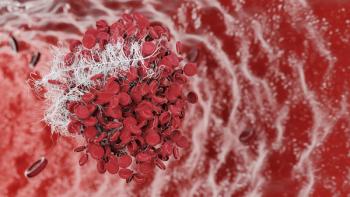
Finding a Weakness in HIV
Researchers examine how immunodeficiency diseases avoid immune system attacks.
Researchers examine how immunodeficiency diseases avoid immune system attacks.
Researchers at the University of Bonn are one step closer to understanding how the HIV-1 virus, HIV, and other immunodeficiency diseases avoid being stopped by the body’s immune system, according to a recent report.
The first line of defense for the immune system against pathogens is innate immunity, which is based on specialized sensor proteins called receptors. The receptors detect foreign materials and a specific receptor called cGAS acts as a genetic material sensor.
When cGAS detects viral DNA, it alerts the body to attack the foreign object. A cascade begins during which the immune system is activated and the cell and its neighbors arm themselves against the viral infection.
Viral DNA is double-stranded and cGAS can detect the double-stranded layers of genetic material. However, viral RNA remains elusive to cGAS, as it is single-stranded and more difficult to detect. If retroviruses multiply in human cells, the RNA is transcribed into DNA, but this is also single-stranded. Therefore, it was surprising for scientists to find that cGAS was activated by the HIV-1.
A possible explanation for this is the hairpin structures that can be created by single-stranded DNA, similar to how a single cable can twist around itself so that it resembles two cables twisted around each other. DNA structures of this type form short double strands and these are detected by the cGAS sensor.
“The hairpin structures which can form in the case of HIV-1 are actually too short to be detected by cGAS,” said Dr. Martin Schlee, senior author of the study.
The researchers were able to show why the process worked: in addition to the short, double-stranded piece, cGAS also detects special building blocks in the non-twisted, single-stranded piece, known as guanosines, resulting in an increased cellular response.
“If we remove the guanosines from these structures, the cell can no longer react to the single-stranded DNA,” explained lead author Anna-Maria Herzer. “By contrast, if we add in additional guanosines, cells react more strongly.”
Of particular note to scientists is the fact that during the HIV-1 infection, the DNA that develops is lacking guanosines.
“HIV-1 viruses appear to have been selected by the immune system to eliminate guanosines from their DNA,” said Professor Dr. Gunther Hartmann, Director of the Institute of Clinical Chemistry and Clinical Pharmacology. “They may thus be able to partially avoid discovery by the cell.”
Work from the Massachusetts Institute of Technology in Boston shows that this DNA detection is actually of major clinical importance. There are patients with HIV-1 whose disease hides itself so well it can no longer be detected.
Certain immune cells of these so-called “elite controllers” accumulate so much virus DNA that they can nonetheless be detected — possibly via the guanosines that still remain. Such a strong immune response is administered that the virus becomes permanently suppressed. Thus the HIV-1 genetic material appears to also be detected in these immune cells via the mechanism discovered by the researchers.
Newsletter
Stay informed on drug updates, treatment guidelines, and pharmacy practice trends—subscribe to Pharmacy Times for weekly clinical insights.










































































































































































































